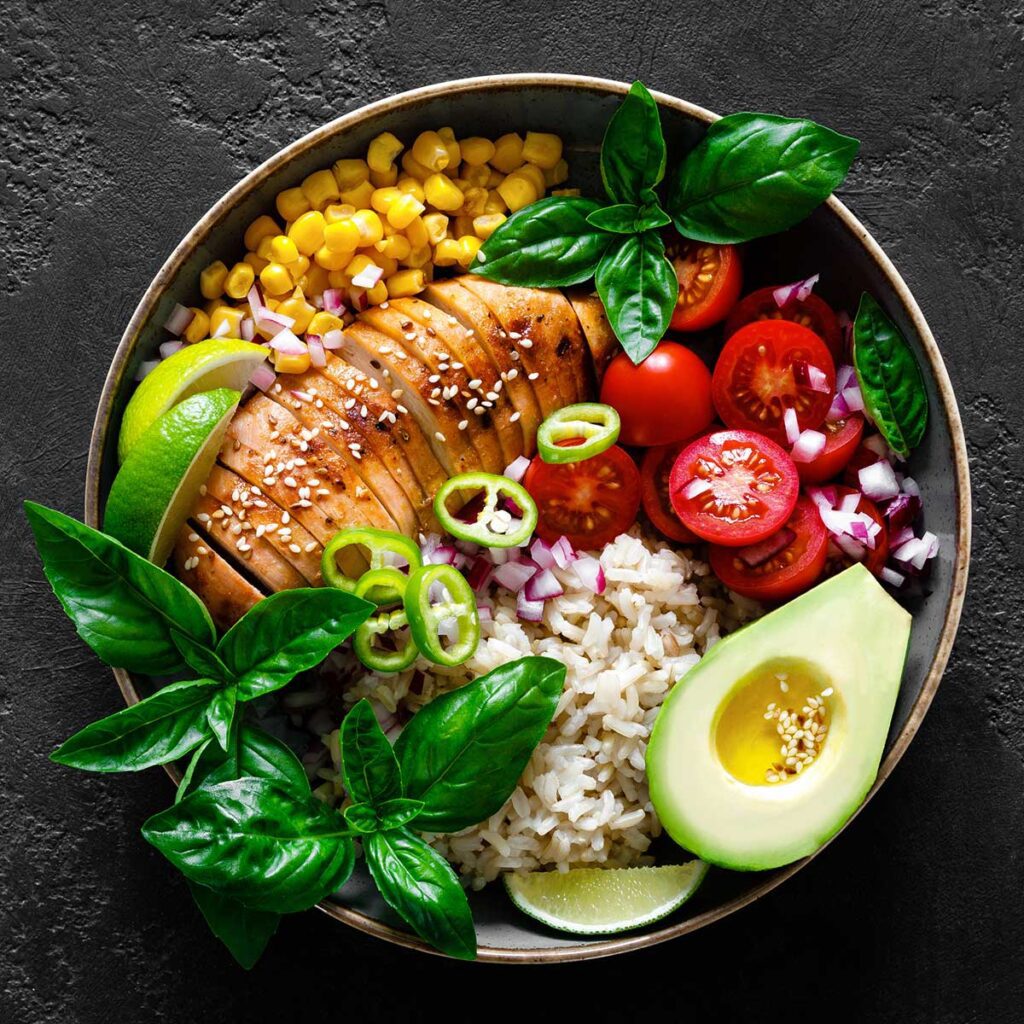While the packages on grocery store shelves may attract you with colorful cardboard containers, inside they may contain drab substances and chemicals with names most people can’t even pronounce. So, despite the brightlycolored packaging these snacks are the creation of a manufacturer, not Mother Nature.
For years experts have been accumulating data to determine what the human body needs for optimal health. Researchers have determined that there are literally hundreds of different food compounds that together can help fight disease, maintain health and slow the aging process. The findings show that people who eat the greatest amount of leafy foods, such as fruits and vegetables, have a 50 percent or lower rate of cancer compared to those who eat the least amount of these.
In fact, in almost every body process, vitamins and other naturally-occurring compounds are involved in fighting obesity, disease and aging. These natural compounds come with extravagant names like flavonoids, indoles and isoflavones, and can be seen in the striking, beautiful colors of fruits and vegetables, such as green, red or yellow bell peppers; red berries and tomatoes; or dark green turnips, kale and peas.
What impact do these colorful foods have in other cultures where they are more commonly consumed? Okinawa, Japan provides some insight into the impact of a colorful diet.

Their diet is based on vegetables and whole grains and supplemented with fish and rice. They use seaweed as flavoring and in stocks and consume cold water fish, which is high in omega-3 fatty acids (O3FA). The people of Okinawa do not overeat nor do they overcook foods. Because many of the vital nutrients are naturally lost in cooking; food is served either raw or only lightly cooked. The people from this region have some of the lowest cancer rates in the world.
The Mediterranean diet holds the same potential advantage. Meals are rich in green, black and red olives, succulent tomatoes, fresh abundant vegetables, whole grains and only small amounts of protein. Comparing the life expectancy and disease of people in this part of the world to those in the United States, the evidence shows that this diet produces a healthier population with lower obesity rates.
There is something almost miraculous about the harmony between plants and people. Plants provide antioxidants that act like a shield against the dangerous reactions of oxidation. We are attracted to plants and borrow their protection for a process we can not control ourselves. When considering their many benefits to our health, it helps to understand the terms “free radical” and “oxidation” and the problems they cause. Free radicals are part of the process that causes common aging issues and also contribute to cancer proliferation. Oxidation is similar to corrosion and all that it implies. Therefore, any nutrient or phytochemical (naturally-occurring chemicals in plants, like beta-carotene) source, rich in antioxidants, should be the hallmark of good diet.
According to the American Institute of Cancer Research (AICR), ellagic acid (found in all berries, but particularly strawberries and raspberries) has shown the ability to prevent cancers of the skin, bladder, lung, esophagus and breast by acting as an antioxidant, which helps the body deactivate specific carcinogens and slows the reproduction of cancer cells. Blueberries contain a family of phenolic compounds called anthocyanosides. Many scientists believe these are among the most potent antioxidants to be discovered.
Vegetables are also rich in antioxidants. They work to scour potentially dangerous free radicals from the body. Spinach, kale, romaine lettuce, leaf lettuce, mustard greens, collard greens, chicory and Swiss chard are excellent sources of fiber, folate and a wide range of carotenoids such as lutein and zeaxanthin, along with saponins and flavonoids.
Researchers disagree on the daily recommendations, but most agree the ultimate goal should be between seven and nine servings per day of fruits and vegetables combined. Look for whole, natural foods in their fullest color–these are packed with fiber. This is also where you will find generous amounts of vitamins, minerals and energy.

